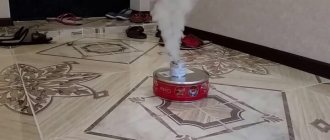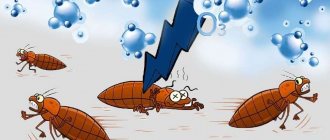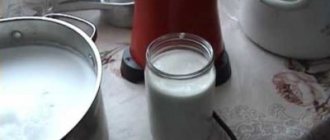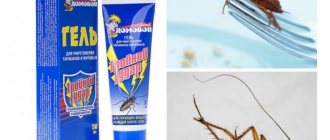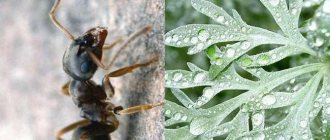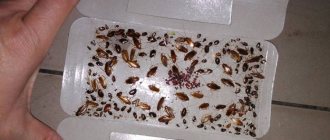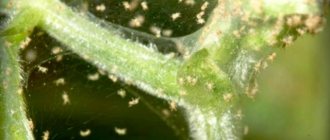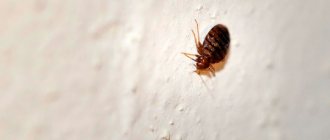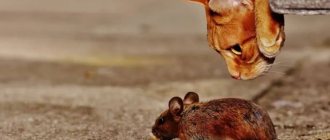To use fly strips effectively, you need to know what the best brand options are today. The market offers many different adhesive tapes, but not all of them are able to last the period described by the manufacturer; flies do not stick to all of them equally well. Therefore, we suggest considering the TOP 5 of the best products of this type, by purchasing which you certainly cannot go wrong.
- What is the danger from flies indoors?
- TOP 5 best adhesive tapes against flies 5th place – Flop (Flop!)
- 4th place – Clean house
- 3rd place – Fumitox
- 2nd place – Lethal force
- 1st place – Boyscout “Help”
- Problem: How to prevent video from collapsing:
- How to make a ribbon yourself:
Features of homemade fly traps
Homemade devices show good results when used to kill flies.
Insects begin to plague humans during the hot summer months, especially in July and August, when new offspring appear. Traps combat fly infestations. The peculiarity of homemade devices is that they attract insects by smell. Flies come to the appetizing aroma, but cannot fly away and die of hunger.
A homemade flytrap does not require special expensive parts. You can invent it from simple means that are often thrown into the trash. Some elements will need to be purchased, but their cost is negligible compared to purchased flytraps.
A homemade invention is the best option because it immediately kills several hundred pests, does not require physical activity, works silently and does not harm the human body, unlike chemicals and poisons.
Attention! A homemade fly trap in the country house and in the apartment will not provide a 100% guarantee of destruction.
Warnings:
- When disinfecting, you should use products that are safe for people.
- If you notice wasps or other insects, buy a special spray and treat the trap before approaching it.
- Place homemade models at a distance from flowers and dining tables.
Insect control devices
On the way to the lamps, the flies fall on the grid through which the current passes and die immediately. The conductive element is protected by an additional large-mesh mesh to prevent accidental contact by a person or pet.
Such devices also help get rid of mosquitoes and midges.
Pest killer
Electric device for killing flying insects. Two 20W ultraviolet lamps act as bait. Near the lamps there is a metal mesh that conducts current. The electric trap is designed for flies and mosquitoes. For proper operation of the device it is necessary:
- place the trap on a flat surface;
- connect to AC mains;
- Make sure that the device does not get wet;
- Periodically clean the tray for dead insects.
Industrial electric traps are widely used in shops, warehouses, markets against flies, mosquitoes and other insects. The device is mounted on the wall at a height of 2 meters above the floor. The product contains ultraviolet lamps, the light of which attracts insects to itself. Flying close to the lamp, they fall on the conductive grid and die.
Basic parameters of the Well electric trap:
- coverage area up to 50 sq. m.;
- weight 3.3 kg;
- dimensions: 34x28x13;
- lamp power 8 W;
- case material – plastic;
- power consumption – 25 W;
- price 6800 rubles.
Ultrasonic repellers
In fact, to prepare a trap, you can take any container, even a cup. As bait for “uninvited guests,” you can use the same means as when making a trap from a plastic bottle.
After completing these simple steps, you need to cover the container with cling film or a plastic bag. The homemade lid should hold tightly. Therefore, it can be fixed with tape or an elastic band.
An electric fly trap is safe for people, but merciless for insects. The principle of its operation is to attract insects by thermal radiation and light.
When a fly flies to the stimulator of her attention, she dies from high voltage and falls into a tray specially designed for this.
Electrical traps sold in stores do not pose a danger to pets. But still, if there are small children in the house, then it is not recommended to plug in the device. The current that kills flying insects is not fatal to humans, but can create discomfort.
Electric traps differ from each other not only in design, but also in the number of built-in functions.
How to make Velcro for flies with your own hands quickly and cheaply
Sticky tape is an effective weapon against flies. Its smell attracts insects, and the glue prevents them from freeing themselves. But you need a lot of such traps. Over the summer, a standard two-room apartment can cost up to 20 pieces, and in private country houses or rural areas - even more. As a result, protection from annoying “clattering noises” costs a pretty penny. But there is a way out - do it yourself Velcro for flies.
A simple solution from this instruction will save you up to 90% of the cost of the trap in the store. Every home has the necessary components, so 9 out of 10 people who want to make a “fly trap” won’t even spend money on it. Approximate implementation time is 10-20 minutes.
How to choose a good tape
The choice of adhesive tape should be approached competently; for this it is necessary to take into account a number of criteria indicating the quality of the product:
- first of all, the condition of the packaging should be assessed: it should not be wrinkled or have smudges, otherwise this will indicate improper storage of the goods;
- the tape must be tightly packed; if it is difficult to remove from the packaging, this is also not good;
- A curious fact is that house flies do not distinguish between red and purple colors, blue and cyan colors irritate them, but yellow, on the contrary, will attract them, so it is wise to purchase yellow adhesive tape;
- We proceed from the size of the room: for an area of 10-15 square meters you will need two-meter tapes; it is also effective to use several sticky traps at once, which can be placed in different corners of the room;
- one of the main indicators of a quality product is a good sticky layer of glue applied to the tape; if the trap is almost dry, it should be returned to the seller;
- When purchasing this product, you must carefully check the expiration date.
Adhesive tape - principle of operation
To feel comfortable in an apartment or country house during the warm season, you will need a large number of adhesive tapes. Despite the fact that effective weapons against annoying insects have an affordable price, over the summer this can cost a significant amount. Therefore, folk craftsmen found a way out of a difficult situation. Using simple and accessible means, they were able to recreate an analogue of an industrially manufactured “trap”.
Velcro against flies is a fairly simple design - a tape coated with a viscous and sticky component. The principle of its operation is based on attracting flies, due to the natural aromatic components included in the impregnation. Attracted by the specific smell, the insect sticks to the adhesive base and soon dies.
Interesting!
The presence of relatives on Velcro does not repel insects. The more flies on the tape, the more willingly the dipterans land on it.
Velcro for flies
Adhesive tapes are effective against all types of flies. Other types of winged insects, such as mosquitoes and midges, quite often use them as a resting place and also stick tightly to the trap. Considering that flies prefer to be located on ceilings and chandeliers, Velcro should be hung in the upper parts of the premises. The height of the placement should be such that the inhabitants of the apartment or house themselves do not fall into the “trap” intended for pests.
Review
Velcro against flies, especially homemade ones, is an excellent solution to the problem of getting rid of unpleasant insects. We use them successfully in our dacha. The only drawback is that you have to change the tapes often, but everything is great. I recommend.
Victor, Nizhny Novgorod
How Velcro works
Velcro against flies is a very simple and yet effective design. This is paper or oilcloth tape covered with a sticky viscous mass. The operating principle is based on the interaction of two components:
- aromatic substances that attract insects;
- a sticky mixture that traps flies.
Sticky tapes are placed in those places where the greatest concentration and activity of flies is observed. The smell attracts insects, which, touching the adhesive layer, stick and soon die of hunger.
Duct tape
Interestingly, the presence of insects already adhered to the tape not only does not repel flies, but, on the contrary, attracts them.
Advantages of adhesive tape
Fly tape is considered one of the most used insect control products. Its popularity is due to a number of factors:
- absence of toxic components in the composition, safety for people and pets (adhesive tapes can be used at home, in kindergartens, hospitals);
- long service life (from 1 to 6 months);
- low cost (even purchased Velcro will not require large financial outlays, but homemade ones will cost practically nothing);
- efficiency;
- versatility (the product can be used in any room, as well as outdoors).
Another advantage is the fact that sticky tapes help fight not only flies, but also other flying insects.
We must remember that the lifespan of Velcro is reduced if you use it outdoors. This is facilitated by dust and small debris falling on the sticky surface.
Fly-eating plant
I really like the third method of fighting flies. But I can't afford it. It is based on the breeding of flytrap plants. They look very beautiful, catch flies very well, and most importantly, you don’t need to do anything for this. The plant is smart enough and can handle them on its own. I would love to buy a couple of these plants for my home, but I haven’t seen them anywhere in our flower shops. Maybe someone can tell me where I can buy at least seeds for breeding them? One more thing, you need to understand that such home helpers are very poisonous, their juice is very dangerous for humans (if taken orally) and can cause poisoning, so do not allow pets and especially children near them. By the way, mint, lavender, and eucalyptus also repel flies; they should also be grown on the windowsill.
Homemade adhesive tape or Velcro for flies
This tape is effective against all types of flies, but it is especially effective against omnivorous and herbivorous species. Other winged insects, including mosquitoes and midges, stick to the tape largely because they choose it as a resting place. Knowing the preferences of flying insects to sit on ceilings and chandeliers, it is better to hang adhesive tapes in the upper part of the rooms. To make adhesive tape you will need:
- Thick paper, cut into long strips 4-6 cm wide. You need to attach a loop to one end of the strip, from which it will be convenient to hang the trap.
- Rosin – 200 ml.
- Castor oil – 100 ml.
- Turpentine – 55 g.
- Granulated sugar – 4 tbsp. l.
- Water – 4 tbsp. l.
You need to boil syrup from water and sugar, bringing it to a yellowish-brown color. When the syrup has cooled a little, add rosin, turpentine and castor oil to it, mix everything thoroughly. Then soak strips of paper with this mixture and hang traps in places where flies are most concentrated - in the kitchen and veranda, above the entrance to the house and window openings, in the toilet.
The ribbons will attract flies with their smell, as well as the opportunity to sit on a surface that is comfortable from the point of view of insects. These devices remain sticky for a long time, so they need to be changed as they become filled with insects.
The given composition of sticky bait is very effective, but if the only thing you have in your house is sugar, you can get by with sugar syrup. The main thing is to make it so thick that flies stick to it well.
A bag of water as a fly repeller
There is an opinion that flies do not like mirror surfaces that reflect sunlight. Therefore, as some housewives advise, you need to do the following:
- Select a whole plastic bag.
- We fill it with water.
- We throw shiny new coins into the water.
- We hang the package near a window or balcony.
The method, frankly speaking, is dubious. This way you can scare away sparrows and other small birds, but not insects. Regarding mirror surfaces, a reasonable question also arises: if flies do not tolerate them, why do we clean mirrors from traces of flies in the summer, almost every day?
This is how they try to repel flies in Asia.
I wonder if the method actually works? Here's what people who have tried this repeller say:
I tested this method and did not notice any effect. The flies flew and fly, sit on these bags and do not show any signs of wild horror at the sight of them.
jar-ohty [76.1K]
https://www.bolshoyvopros.ru/questions/1557794-pravda—chto-podveshennye-pakety-s-vodoj-i-monetkami-vnutri-otpugivajut-muh.html
Just imagine. A fly flies and flies into the apartment. An ordinary apartment, ordinary surroundings. Only there are bags hanging around (for no apparent reason!), and in them (who would have thought!) there is water, and in it (in general!) there are coins. The fly is thinking. Surely there are crazy people living in the apartment. It is necessary, the fly decides, to stay away from here. You can expect everything from psychos.
Mikhail Belodedov
https://www.bolshoyvopros.ru/questions/1557794-pravda—chto-podveshennye-pakety-s-vodoj-i-monetkami-vnutri-otpugivajut-muh.html
Mythbusters in season 10 (episode 157) refuted the myth that hanging a transparent bag of water repels flies. They conducted a test, and it turned out that the package, on the contrary, lures!
Ksusja
https://www.forumhouse.ru/threads/5889/page-6
What you need to make a sticky trap
Components for making Velcro
To make Velcro at home you will need:
- castor oil (if you don’t have it, you can use sunflower oil) – 100 g;
- rosin – 200 g;
- oilcloth, wrapping or landscape paper;
- honey or jam - 1 tbsp. l.
On a note!
The presence of castor oil in the adhesive mixture, which is covered with Velcro for flies, allows it not to thicken for a long time. As a result, a film does not form on the surface of the sticky layer, which extends the life of the trap.
Step-by-step instruction
Prepare rosin, a lighter (or a mini-burner or hair dryer) and a metal container where the mixture will be heated and boiled. To avoid burning your hands, take the heating container with tongs or tweezers.
Take the container with tongs, place rosin on it and start heating. Wait until the mixture boils and hold for 1-2 minutes until all the turpentine evaporates.
Add oil to boiling rosin and heat the mixture for another 30-60 seconds. Castor oil can be poured out with a syringe. Be careful not to get the oil into the fire to avoid burning your hands or causing a fire. Fat burns well.
Wait until it cools completely. After 10-20 minutes the mixture will thicken. If the proportion is chosen correctly, the glue will be moderately thick. To check the condition, take a match and dip its tip into the impregnation. When you remove the match, the thread of glue should stretch out more than 10 cm. The mixture should be plastic - the torn thread that sticks to the match should be pulled together into one drop.
Prepare paper, fastened sticks, a match for spreading and the glue itself. If you have a standard sheet of paper and not ready-made tape, cut a strip of it 10 cm wide and 30-40 cm long.
Insert the tape between the sticks fastened at the base as shown in the image. Wrap the strip around the sticks twice and tighten slightly until it is firmly in place.
Apply glue to the tape. Holding it by the sticks with one hand, spread the impregnation over the entire strip with a match. Try to keep the layer even, but don't overdo it. There is no need to cover all the paper with glue. For a 30 cm tape, 3-4 heavy drops of glue (as in the photo) are enough.
Bottle trap for flies and fruit flies
This is a closed type trap, but it will also attract insects with a sweet smell and catch them with a sticky substance. To make it, use a regular 1.5-2 liter plastic bottle of water or soda.
- The top third of the bottle needs to be cut off, and 200-300 ml of viscous sugar syrup should be poured into the bottom of the lower part. You can add a little honey, beer or fruit juice or fermented jam to the syrup. The consistency should be viscous enough so that insects quickly drown in it and are unable to escape.
- Insert the cut top part of the bottle into the bottom part with the neck down, without a cap. Fasten the two parts with a stapler or tape.
- In order for flies and flies to more actively fall into the bottle, its edges should be lightly greased with sweet syrup and placed where insects fly most often.
If you plan to place the trap outside, it is better to add a little white vinegar to it to repel honey bees and thereby protect them from death.
Instead of a plastic bottle, you can use a glass jar and funnel. The principle is the same: pour a little sweet viscous liquid into a jar, insert a funnel into the jar with the end down, and change the bait from time to time.
Types of simple traps
The whole variety of homemade flycatchers can be conditionally combined into 3 groups.
- With edible bait, when an insect gets into a confined space, but does not die, but simply cannot get out.
- With poisonous bait. The fly dies after eating something “sweet.”
- Sticky flycatchers. Stuck in the sticky substance, the insect dies of starvation.
There are craftsmen who make homemade “electric shockers” for flies, but this device can hardly be made without certain professional skills.
From a plastic bottle
The easiest way to make a primitive fly trap is from an ordinary plastic bottle. The essence of the device is that the design allows the insect to move in only one direction - inside the container. There is no turning back. And so that the fly wants to penetrate there, they prepare bait with an attractive smell.
The bottle must be cut in half. The lower part is a container for bait. The upper inverted half is a funnel through the narrow neck of which the insect enters the trap. The ratio of the height of the lower and upper parts is 2:1, the funnel must be tightly secured with tape or a stapler.
Advice! The funnel itself should not come into contact with the bait, or contain drops of sweet liquid or other food, otherwise the insect will have no reason to climb inside; it will “have lunch” on approach.
How to catch and guide a fly into a trap placed in a certain part of the room? For this, the following compositions are used.
- Sweet liquid - rare jam, sugar syrup, honey, Coca-Cola.
- Fermented liquid. It is easy to obtain if you add a drop of dry yeast to the sweet filling.
- Flies fly well on red wine and beer.
- If you add ground pepper (black) or a granular insecticide, such as Agita, to a sweet liquid, the insects will not only be trapped, but will also die.
Advice! It is better to use meat or fish as bait outdoors. Flies and I have different ideas about pleasant smells - what they like irritates our sense of smell.
The final touch is to place the traps in the places most attractive to insects. On window sills - flies tend to the light, kitchen table, next to the trash can, toilet
From a glass jar
You can make a fly trap with your own hands from a glass jar and a funnel of a suitable size.
Overripe fruits with a sweet taste are placed at the bottom of the dish - apples, bananas, peaches, apricots. It’s good if they start to rot and wander. Instead of a lid, insert a funnel, securely fasten it so that there are no gaps between it and the wall of the jar - wrap the trap around the circumference of the neck with tape or tape.
From a plastic container
To make a small, neat flytrap, take any transparent container - a glass, a plastic container. Place a little honey, sweet fruits, jam on the bottom, cover with cling film, in which 1-3 small holes are made. The operating principle of the device is the same as described above.
Advice! When using a homemade trap, do not forget to periodically dispose of any insects you encounter, wash the container, and renew the bait. Don't let the flytrap become a source of unsanitary conditions.
Duct tape
Another type of DIY fly trap is homemade duct tape. Numerous videos on how to make a sticky substance from honey and sugar do not stand up to criticism. This coating will dry quickly, God willing, if you manage to catch a few insects. To get Velcro similar to store-bought ones, use the following composition.
- 2 parts pine resin (rosin), melted on a burner or water bath;
- 1 part castor or flaxseed oil;
- a little (“for taste”) honey, sugar syrup.
The result is a truly sticky substance that maintains a viscous consistency for a long time. Ribbons are cut from durable kraft paper, parchment, and oilcloth.
Advice! If you have ALT glue, which is used for small rodent control, you can use it for sticky tape.
How to make your traps more effective
To combat them, you can use various methods, including traps, which have the following advantages:
- In fact, all models are safe for humans and pets because they do not involve the use of toxic chemicals.
- The result is always guaranteed; a certain number of individuals will in any case fall into the trap set and will be destroyed.
- Wide range of types and models. This variety allows you to choose the most suitable device; some of them are budget options and are available to all categories of people.
- A number of different devices can be made independently; it will not take a significant amount of time or effort.
However, the use of traps also has some negative sides, the main ones being:
Low degree of effectiveness compared to the use of insecticides, which can virtually instantly destroy entire populations.
No protective effect
Only those individuals that fall into the set traps will be destroyed.
It is necessary to wait for the moment when the fly pays attention to the trap and falls into it, while some other methods allow you to immediately proceed to the destruction of pests.. https://www.youtube.com/embed/Uwh7HfJN3uE. https://www.youtube.com/embed/Uwh7HfJN3uE
One of the most universal means for exterminating unwanted neighbors is a fly trap. You can make many options for its execution with your own hands from scrap materials.
Plastic bottle trap
In order to make a trap, you need:
- Cut the bottle along a line running 2/3 of its height.
- Turn the top part over and place it in the bottom, neck down.
- Secure both parts with tape.
- Pour bait into the flytrap - diluted jam, beer, honey or sugar syrup.
- Place a trap in the room where you want to catch insects.
The principle of catching a flytrap from a glass jar is the same as in the version with a bottle.
It is made as follows:
- Place fruit in a jar with a volume of 0.5 to 3 liters or pour in a sugar-containing liquid.
- Insert the narrow end of the funnel for pouring liquid into the neck of the jar and secure it with tape.
- Place a trap in the place where you want to catch insects.
To make this flytrap, a plastic container of any shape is used - round or square. The trap is made as follows:
- Place the bait in the container.
- Cover the top of the vessel tightly with cling film, in which, using a knife or awl, make small holes with a diameter of 3–4 mm so that a housefly can crawl through them.
- Place the trap in a place with a lot of insects.
The principle of operation of the trap is the same as the previous ones. Some flies may leave the trap, and its effectiveness will depend on how attractive the bait is to insects.
The advantage of this trap is that flies do not need to penetrate inside a closed space, which frightens some insects, so its effectiveness is higher than that of the previous presented options. You can do it yourself as follows:
- Mix 2 parts pine resin with 1 part linseed oil and a small amount of sugar syrup.
- Cut strips 3–4 cm wide from plastic film.
- Apply the prepared adhesive mixture onto the tapes using a brush.
- Hang traps in the room where you want to kill insects.
A simple, albeit somewhat controversial solution to protect against flies. In order to make such a repeller, you need the following:
- Fill a clear plastic bag with clean water.
- Drop a few shiny little coins into the water.
- Tie the bag tightly.
- Hang the repeller outside on a window or door—where the flies are likely to come from.
To make this trap, you need the following:
- Spread the compact disc with honey or thick sugar syrup.
- Place it in the freezer for 0.5 hours.
- Tie a thread to the disk and hang it in the room where you want to catch insects.
Attention! Flies should not have the opportunity to intercept a piece of food outside the trap. The effectiveness of crafts will be higher if all food is removed from the apartment and the trash is taken out. All food should be put in the refrigerator
Especially berries
All food items should be placed in the refrigerator. Especially berries
The effectiveness of crafts will be higher if all food is removed from the apartment and the trash is taken out. All food items should be placed in the refrigerator. Especially berries.
Homemade fly strips
If you don’t want to spend money on such a trifle, then you can make Velcro yourself.
From rosin
There are many recipes. Let's look at a few of the most popular ones.
Application of rosin:
Tricks and secrets of masking tape that will be useful in everyday life and beyond
- 30 g of rosin with 20 g of castor oil are placed in a tin can. The container is heated by immersing it in hot water. Iron conducts heat well, and the composition in the jar will heat up quickly. A few tablespoons of honey or jam are poured into the resulting mass and spread onto paper with a brush.
- Pine resin 300 g, 10 g wax, linseed oil 150 g, 50 g molasses or honey.
- 300 g rosin, 60 g jam or jam, 200 g linseed oil.
- 400 g rosin, 100 g pure bee honey, 200 ml castor oil, 40 ml glycerin oil.
First, purchase paper strips for depilation or use plain thick paper. Cosmetic strips are much better because of the synthetic fiber in the composition, which retains the sweet mass and does not absorb it.
Rosin is always heated in a water bath, just like resin. All ingredients are placed in tin cans, which can then be thrown away. When the resin begins to melt, stir it so that there are no undissolved pieces. Other ingredients are added to the melted rosin. The mass should turn into a homogeneous mixture, with a single color.
Prepare the paper, make a hole for the rope and a plastic jar at the other end. Wide sheets are cut in half.
The spreadable composition should be hot and viscous. When cooled down, immediately reheat and continue working. The layer is smeared with a thickness of 1-2 mm so that the mass does not flow down the edges and the fly does not escape from captivity.
Honey and sugar syrup can easily be replaced with any sweet and sticky ingredients. Sweet baits attract flies with their scent.
From tree resin
You can buy it at a gardening store or collect it yourself. Vegetable or castor oil is added to the resin, and sugar is used instead of jam or honey. To enhance the stickiness of the composition, add wax or turpentine. If you take wax, then you need no more than 10 g of the substance per 200 g of resin.
Cut strips up to 8 cm wide and no more than 1.5 m long. Wax and resin are poured into the prepared container and heated in a water bath. Oils are added 2 times less than resins. And you need no more than 40 g of sugar or sugar syrup.
From a tin can
The used tin can is wrapped with electrical tape or tape. Then the tape is peeled off, leaving a sticky mark on the can from the adhesive side of the tape. A light source is left inside the jar to attract more flies at night.
This method will not keep out large insects, but small midges and mosquitoes can easily be kept out.
Scotch
This is the easiest way. There is no need to come up with additional ingredients, cook, or spread. Pieces of tape are hung around the house. Their length should be such that all household members can easily move without touching the adhesive tape.
Sticky insect traps
You can go to a hardware store and buy a sticky fly trap. But sometimes you can’t guess whether the glue on the tape is of high quality or whether it has already dried out. On some Velcro, flies walk in crowds, and the effect is zero. Let's try to make a trap ourselves.
DIY Velcro
- Quite thick paper (not cardboard, but so as not to get wet);
- castor oil - 2 tbsp. l.;
- rosin - 1 tbsp. l.;
- jam.
Manufacturing:
- Mix rosin and castor oil in a water bath. Combined with oil it turns into flytrap glue
- Add 4-5 drops of jam to the mixture to later attract flies. The taste of jam is an excellent bait
- Cut the paper into strips 5–7 cm wide.
- We cover the strips with our adhesive solution on both sides.
- We hang it in places where flies gather. Flies stick to a strip soaked in glue and jam
The result is the same as from purchased Velcro. But you should hang it in such a way that you don’t become a victim of the trap yourself and then remove the glue from your hair.
Sometimes they use tape
It's amazing how much imagination and skill we use in everyday life. One of the popular ways to protect against flies is tape. Regular stationery or double-sided. It is glued to the ceiling, walls, even chandeliers. Like any sticky tape, insects will stick to it.
The method is impractical: the tape peels off from surfaces and falls off. Most often, on the inhabitants of a house, garage or other premises. Thin tape curls into a spiral, reducing the likelihood of a good catch. In addition, you then have to remove traces of tape and dust. But the flies actually stick to it.
If adhesive tape is chosen as a flytrap, then you should take a thick tape
Sticky trap from a tin can
- A clean tin can without a lid;
- insulating tape;
- ultraviolet flashlight.
Manufacturing:
- Cover the tin can with electrical tape.
- We smooth the electrical tape with our fingers and remove it from the can. This way, glue will remain on the surface.
- We insert a switched-on flashlight inside the jar.
- Flies will flock to the light and stick to the jar.
The method is suitable for midges, small flies and mosquitoes. A thin layer of glue will not hold large insects.
Purchased tapes
Stores offer a fairly wide range of sticky fly tapes. They all operate on the same principle, but differ in size, composition of the sticky layer, and therefore in efficiency and service life. The greatest demand is:
- Raptor;
- Fumitox;
- Clean house;
- Taiga;
- Destructive force.
Most often, one tape is enough to protect a room of 10–15 m2. Many manufacturers use pheromones as bait, and a composition based on rubber glue as a sticky layer.
Tools Overview
The most popular and effective today are the following:
- Adhesive tape from the manufacturer Insectum Laboratory. Pack of 4 pieces. cost 40 rubles. The packaging of the product will reliably protect your home from flies throughout the year. It contains a special adhesive and pheromones.
- Velcro Raptor. The tape will protect against pests for 2 months. For a room up to 15 square meters, 1 tape is enough. Cost 30 rubles. The product contains pheromones and rubber glue.
- Dipter tape. There are 104 pieces in a box. Price for 1 piece. equal to 5 rubles. It is based on special glue and pheromones.
- Flycatcher Ted. Designed to protect up to 15 sq.m. area. Price 5 rubles. Consists of paper impregnated with glue and pheromones.
- Clean house. One tape will protect 10 square meters. m. premises. The cost for one piece is 15 rubles.
- Moskitol. Designed for an area of 10 square meters. meters. Cost 15 rubles per piece. Contains rubber adhesive and pheromones.
- Fumitox. A meter-long tape with the active ingredient attractant. To protect a room of 15 square meters. meters you will need 1-2 tapes. Cost 20 rubles per piece. It consists of a meter-long strip of paper treated with glue and special hormones that attract insects.
Tips for use
The effectiveness of fly traps will increase if several different types are used at the same time. When there are a lot of insects, it is best to make several traps of each type and install them in all rooms or distribute them throughout the garden. Catching gadflies, fruit flies and midges can also be done at night by equipping the traps with small flashlights or ultraviolet lamps.
If the winged pests have the opportunity to feed on something outside the trap, the bait will not be of interest to them, so do not leave food items in the open. Flies and flies will only become interested in hard-to-find treats when they have no other choice.
Sources
- https://poleznii-site.ru/dom/byt/lovushka-dlya-muh-svoimi-rukami-kak-sdelat-v-domashnih-usloviyah.html
- https://svoimirukami.mediasole.ru/lipuchka_dlya_muh_svoimi_rukami
- https://notklop.ru/muhi/4-sredstva/60-lipuchka-dlya-muh/
- https://WikiParazit.ru/babochki-i-moshki/lipkaya-lenta-lipuchka-ot-muh.html
- https://felisov.ru/muhi/kak-sdelat-lipuchku.html
- https://apest.ru/muhi/sredstva-ot-muh/lipuchka-dlya-muh/
- https://beetlestop.ru/lovushka-dlya-muh-svoimi-rukami/
- https://build-experts.ru/sdelat-lipkie-lenty-dlya-muh/
- https://legkovmeste.ru/poleznye-sovety/delaem-lovushki-dlya-muh-svoimi-rukami-sladkie-kleykie-i-dazhe-elektricheskie.html
- https://stroy-podskazka.ru/muha/lovushki-svoimi-rukami/
[collapse]
